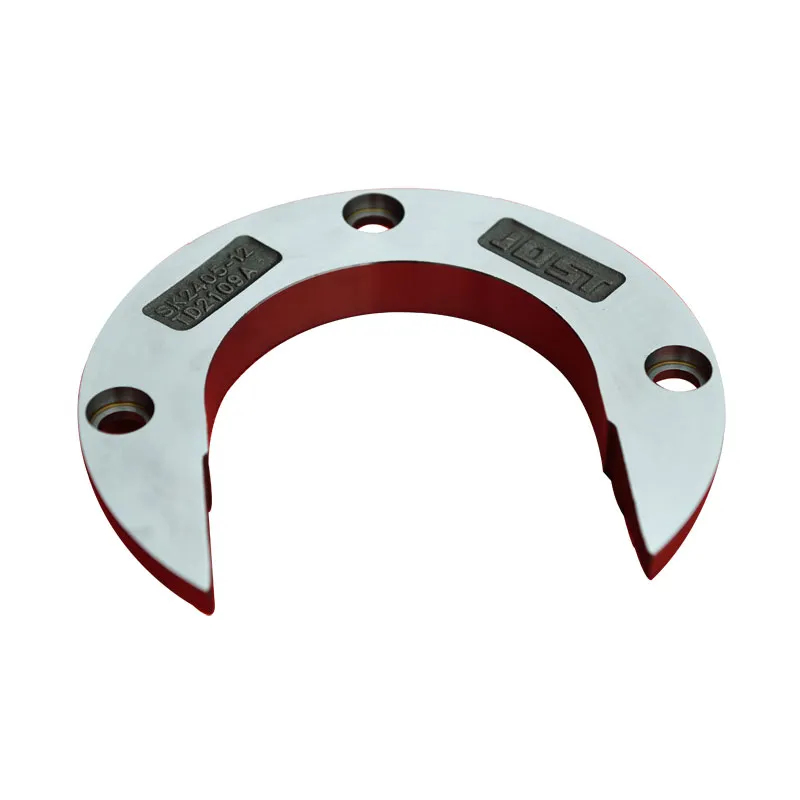The Role of Advanced Forging Techniques in Modern Tractor Manufacturing
2024-08-23
Introduction
In the realm of modern agriculture, tractors are indispensable. They perform a multitude of tasks, from plowing fields to hauling heavy loads. To withstand these demanding tasks, tractors must be equipped with parts that are not only strong but also durable. This is where advanced forging techniques come into play. In this blog, we will delve into the role of these advanced techniques in the manufacturing of tractor components and how they contribute to the efficiency and reliability of these machines.

Advancements in Forging Technology
Forging technology has come a long way, evolving from traditional hammer forging to modern techniques that use computer-aided design (CAD) and computer-aided manufacturing (CAM) systems. These advancements have significantly improved the precision, efficiency, and quality of forged parts, making them integral to modern tractor manufacturing.
1. Precision Forging: Precision forging allows for the production of complex shapes with tight tolerances. This technique minimizes the need for additional machining, reducing material waste and production costs. For tractors, precision forging ensures that parts fit perfectly, enhancing overall performance and reducing wear and tear.
2. Closed Die Forging: This technique involves placing a heated metal blank between two dies that contain the desired shape of the part. The metal is then compressed, forming the part. Closed die forging is widely used for producing high-strength, detailed components such as gears and crankshafts for tractors.
3. Cold Forging: Unlike traditional hot forging, cold forging is performed at or near room temperature. This process improves the mechanical properties of the metal, such as its strength and hardness, without the need for additional heat treatment. Cold-forged parts are ideal for components that require high precision and strength, such as fasteners and connecting rods.
4. Isothermal Forging: This advanced forging technique maintains the temperature of the workpiece and the die at a consistent level, preventing thermal gradients that could cause defects. Isothermal forging is used for high-performance parts that require uniform properties and minimal distortion, making it ideal for critical tractor components.
Benefits of Advanced Forging Techniques for Tractors
1. Increased Reliability: Advanced forging techniques produce parts with superior mechanical properties, such as high strength, toughness, and resistance to fatigue. This ensures that tractor components can withstand the demanding conditions of modern farming, reducing the risk of failure.
2. Cost Efficiency: By reducing the need for additional machining and minimizing material waste, advanced forging techniques lower production costs. This cost efficiency is passed on to the end-users, making tractors more affordable and accessible.
3. Enhanced Performance: Tractors equipped with forged parts benefit from improved performance. The precision and strength of forged components ensure smooth operation, efficient power transmission, and better handling, allowing tractors to perform tasks more effectively.
4. Sustainability: Forging is an energy-efficient process, and advanced techniques further reduce energy consumption. The use of sustainable materials and processes in forging contributes to the overall reduction of the environmental footprint of tractor manufacturing.
Future Trends in Forging for Tractors
As the demand for more efficient and sustainable agricultural machinery grows, the forging industry is likely to see further advancements. The integration of artificial intelligence and machine learning into forging processes could lead to even greater precision and efficiency. Additionally, the development of new materials and alloys that offer superior properties will further enhance the performance and durability of tractor components.
Conclusion
Advanced forging techniques have revolutionized the manufacturing of tractor components, providing parts that are stronger, more durable, and more cost-effective. As technology continues to evolve, these techniques will play an increasingly important role in ensuring that tractors can meet the growing demands of modern agriculture. By investing in high-quality forged parts, manufacturers can enhance the reliability and performance of their tractors, ultimately benefiting farmers and the agricultural industry as a whole.


